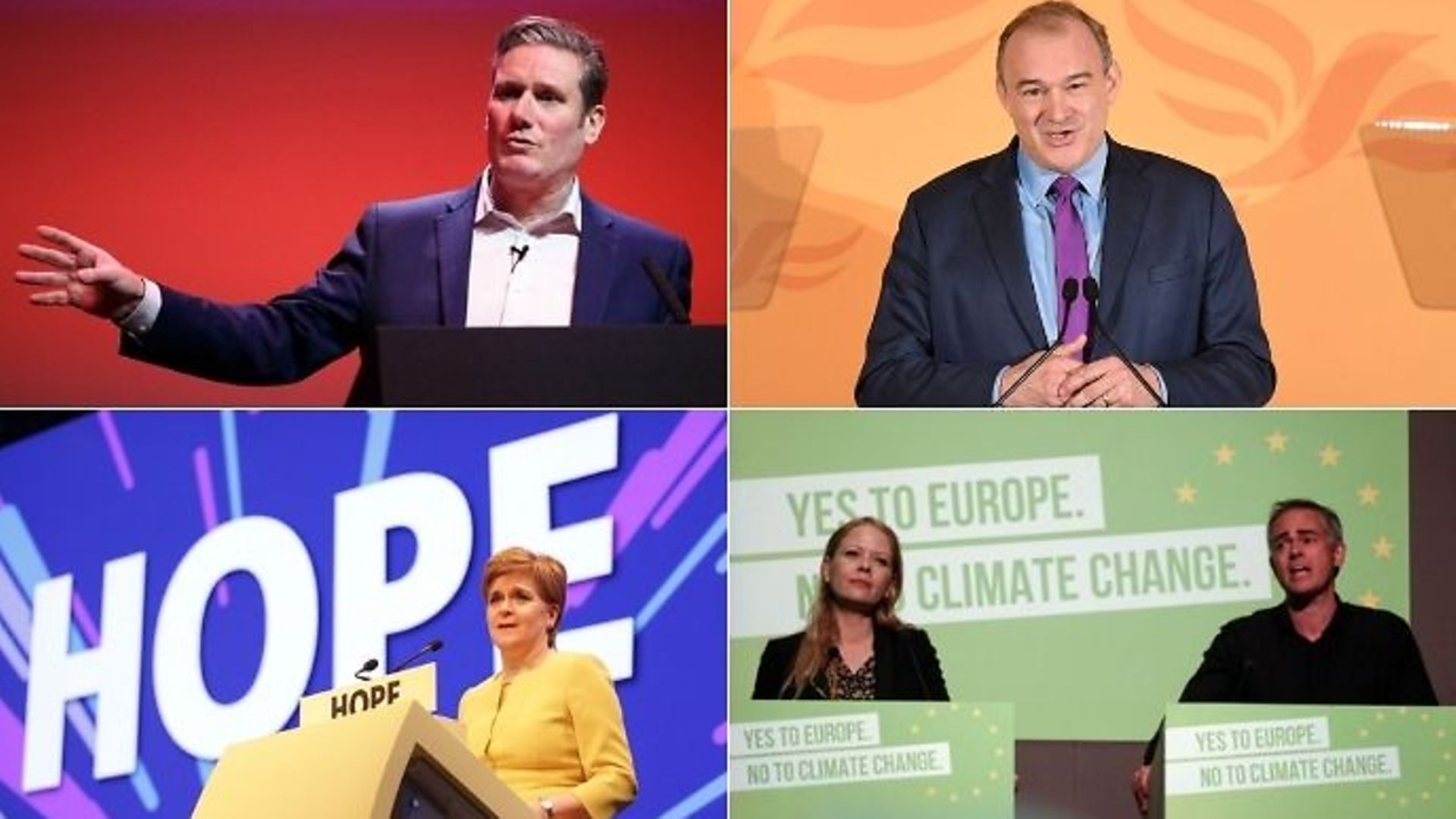
This May will see the country’s largest round of contests outside a general election, in an extraordinary day of democracy and crucial contests
Election buffs are in for an exciting spring; and for every party it will be unusually tense. For the first time since Brexit and the outbreak of Covid, millions of real votes, as distinct from opinion polls, will reveal the mood of the nation.
But that is only half the story. Because of the pandemic, no local elections were held last year. They were postponed until this May, so that they could be held along with the contests due this year anyway. It will be a buy-one-get-one-free election day – the largest round of contests that Britain has ever seen outside a general election.
On Thursday May 6, Scotland, Wales and London will choose their new parliament, Senedd and assembly respectively. Mayors for all the main English conurbations will be elected. Votes will be held for almost all English councils – metropolitan, county and district. Apart from residents of a few rural areas, every British elector will have a vote. Their choices will determine the fate of every significant politician outside parliament.
In terms of outcomes, as distinct from statistics, the elections to Scotland’s parliament matter most. Last time the SNP fell two seats short of an outright majority. However, with the support of five Green members on most issues, they have been to govern fairly comfortably. Scotland’s voting system is broadly proportional: winning outright is not easy. Only once in the five elections since devolution has a party achieved that goal: the SNP in 2011.
Recent polls suggest they can repeat it this May – as long as they are not derailed by the bitter conflict between Alex Salmond and Nicola Sturgeon. If they do, they will be able to put pressure on Boris Johnson to agree to a new referendum on independence. This is something the government in London has so far refused to countenance. A clear SNP victory would certainly heighten the tensions between Edinburgh and London.
In Wales, it is Labour that hopes to gain the two seats it needs for a majority – again, under a broadly proportional voting system. It will be some achievement if Labour succeeds: in recent years, the Conservatives have been snapping at its heels; last spring, the Tories briefly went ahead in the polls. Since then Labour has re-established a modest lead. Its challenge now is not just to see off the Conservatives and Plaid Cymru; it is also to pick up some of the seven seats that the now near-defunct UKIP won in 2016.
One other thing is worth noting beyond England’s borders. This year Wales will join Scotland in giving the vote to 16- and 17-year-olds. How long before the franchise extended for the whole of Britain?
In England, the biggest contest is for London’s mayor. Last time Labour’s Sadiq Khan won comfortably. The Conservative candidate, Shaun Bailey, hopes to repeat Boris Johnson’s achievement in defeating Labour in 2008 and 2012. He shouldn’t give up the day job: London has been moving steadily Labour’s way in recent years. Even in the 2019 general election, when Labour was hammered in the rest of England, it retained a 21% lead in the capital.
Exclusive polling for The New European puts Khan 24 points ahead of Bailey. Excluding don’t knows, he has 62%, compared with 38% for Bailey. The survey, by Deltapoll and completed on February 22, should cause little surprise. However, it flatly contradicts Bailey’s claim that private Conservative polling puts him in the lead. Neither the candidate nor his party has disclosed any details. His claim defies all sense. It sounds like fake news.
Khan should win easily. A trickier question is whether it can gain the extra seat it needs to win a majority in the London assembly.
Andy Burnham should also secure a second term as mayor of Greater Manchester. He won 63% of the vote in 2017 and looks impregnable. Less certain is the mayoralty of the West Midlands. In 2017 Andy Street narrowly defeated Labour’s Sion Simon: his margin of victory was less than 4,000 out of a total vote of almost half a million. Labour would love to take control of a region that has tended historically to side with whichever party is ahead nationally.
However, Labour suffered badly in the 2019 general election, losing nine of the 24 seats it had won in 2017. Liam Byrne – Labour’s candidate and, like Burnham, a former cabinet minister – is the kind of smart, practical and moderate candidate who represents a clean break with the Labour Party of the Corbyn years. Victory, or even a narrow defeat, would show that voters are beginning to warm to the party’s shift away from the left.
Conversely, a Conservative victory in West Yorkshire (the area around Leeds and Bradford) would show that Labour is still being hammered in the “red wall” parts of the north where it lost parliamentary seats just over a year ago. This May sees West Yorkshire’s first mayoral election. Labour’s candidate, Tracy Brabin, is familiar to voters as a former actress on Coronation Street and EastEnders. More recently, she was elected MP for Batley and Spen following the murder of Jo Cox.
West Yorkshire used to be solid Labour territory. The last time Labour was in government, it held all bar one of the area’s 22 parliamentary seats. In the 2019 general election the Conservatives won nine, and closed the gap in votes to just 6%. If they defeat Brabin, the Tories will be celebrating with something stronger than Yorkshire tea.
That said, any single part of England could throw up strange results. The bigger national test for both Labour and the Conservatives – what both Johnson and Sir Keir Starmer will be studying with special care – will be the overall shares of the vote across Britain. After each year’s local elections, Colin Rallings and Michael Thrasher project those shares for the Local Government Handbook, taking account of where elections are and are not held. This year, the calculation will be more straightforward than usual, for very few places escape having an election this time.
What is more, the vote-share projection will matter more this year than the other usual measure of success and failure: the number of council seats gained and lost by each party. This is because two years’ worth of elections are being held at the same time. The baseline for some contests is 2016, and for others 2017. In 2016, the two main parties were level-pegging; in 2017 the Tories enjoyed an 11-point nationwide lead in the local elections. It is perfectly possible that the seats last fought in 2016 will see Conservative gains from Labour – while the seats last fought in 2017 will see shifts in the opposite direction.
At this point, a word of caution is necessary. It is tempting to judge local-election vote-shares with as if they are giant opinion polls. Tempting: but risky. Some people split their vote – backing one party for local elections and another for national elections. Turnout figures are also different: many more people vote in general than local elections. Any nationwide assessment needs to take this into account.
The best starting point is a like-with-like comparison with previous years – that is the national pattern revealed by each May’s local elections. The table shows the figures for the past ten years, and contrasts them with an average of the national polls conducted at around the same time. (2015 is omitted because a general election was held on the same day as that year’s local elections, so campaigning was dominated by national issues and turnout was far higher than usual.)
Some lessons from the past decade:
* Polls and local elections pick up the same broad trends, but when the national race is close (as in 2011, 2016 and 2019) they can disagree as to which party, if either, is ahead.
* In the mid-term of a parliament, the opposition generally moves into the lead in both polls and local elections. This was true in 2012-13, and also in previous decades.
* When the polls report a big lead (such as Labour in 2012 and the Tories in 2017), local elections produce a narrower gap. The same was true when Labour was miles ahead in the 1990s.
* The Liberal Democrats invariably outperform their poll ratings in local elections. However, polls provide the better guide to their support in general elections.
What, then, can we expect for the projected national vote share this May? The latest polls show the Conservatives pulling ahead by 4-6 points, following a spell last autumn when Labour edged briefly into a narrow lead.
If the polls continue to report Tory leads, then Labour will be doing well to overtake the Conservatives in this May’s local elections. On the other hand, the parliament will be 17 months old. On past experience, the government should be heading towards its mid-term doldrums. If the Tories come out ahead, or even level-pegging, despite Covid and the hiccups associated with Brexit, they would have reason to be well satisfied.
The Lib Dems will be just as anxious as the main parties. In some recent polls they have fallen behind the Greens. That won’t happen in May, if only because the Lib Dems will be fighting many more seats and have a solid local government base in some councils. A 15% national share would be par. Above that, they can claim to be still in the game, despite being marginalised at Westminster. Much less, on the other hand, and their road back to national relevance will be even longer and harder than they fear.
Delayed elections
The pandemic is not the first time UK elections have been postponed.
General elections were suspended during the First and Second World Wars. As a result, there was no general election for eight years after December 1910.
The December 1918 election was then held during the Spanish influenza pandemic.
Due to the outbreak of the Second World War, parliament sat for almost 10 years without a dissolution from November 1935 until May 1945. A general election was due to be held by November 1940. In that month, parliament passed the Prolongation of Parliament Act, extending the parliamentary term by one year.
The Act was amended on an annual basis each year until 1945. By-elections continued to take place during the Second World War, but the main parties did not put up candidates against each other.
After 1945, no election was postponed until 2001, when the Labour government delayed local elections from May 3 to June 7 because of a serious outbreak of foot-and-mouth disease.
In 2004, 2009 and 2014, local elections were held in June rather than the first week in May, so they could take place on the same day as elections to the European parliament.
What do you think? Have your say on this and more by emailing letters@theneweuropean.co.uk










